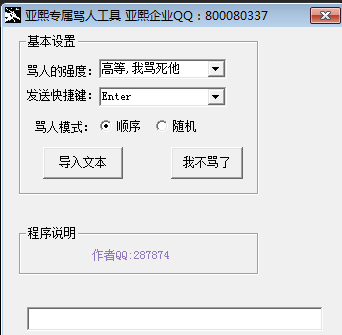golang实现pyffx
时间:2023-05-19 13:22
Golang是一种快速、高效、跨平台的编程语言,越来越受到开发者们的青睐。而pyffx是一个方便、可定制的加密算法库,主要用于对字符串进行加密、解密等操作。本文将介绍如何使用Golang实现pyffx。 一、什么是pyffx? pyffx是一个Python实现的加密算法库,可以对字符串进行加密、解密等操作。pyffx算法使用Feistel密码体系,它属于分组密码,将明文分成两半,分别进行多次迭代,最终得到密文。pyffx算法的特点是可以进行可逆加密和不可逆加密。 二、Golang实现pyffx 在Golang中,我们可以通过使用以下库来实现pyffx算法: 四、示例代码 下面是一个使用Golang实现pyffx算法的示例代码。 五、总结 本文介绍了如何使用Golang实现pyffx算法,通过上面的示例代码,我们可以发现Golang实现pyffx算法非常简单,只需要用到crypto/sha1、crypto/aes和strconv等常用库。 当然,本文提供的是一个简单的实现,如果你要用于实际生产中,需要进行更加完善的测试和验证,确保安全性和可靠性。 以上就是golang实现pyffx的详细内容,更多请关注Gxl网其它相关文章!package mainimport ( "bytes" "crypto/aes" "crypto/cipher" "crypto/rand" "crypto/sha1" "fmt" "strconv")const ( blocksize = 8)var ( seed = []byte("0123456789abcdef"))func main() { key := []byte("this is a secret key") text := []byte("hello world") // 初始化 parameters, err := cipherSuite(key) if err != nil { panic(err) } // 加密 ciphertext := encrypt(text, parameters) fmt.Println("ciphertext:", ciphertext) // 解密 plaintext := decrypt(ciphertext, parameters) fmt.Println("plaintext:", plaintext)}func cipherSuite(key []byte) (cipher.Block, error) { // 计算密钥的散列值 keyDigest := sha1.Sum(key) // 生成参数 params := make([]byte, 20) copy(params, keyDigest[:]) // 生成加密器 block, err := aes.NewCipher(params) if err != nil { return nil, err } return block, nil}func encrypt(plaintext []byte, parameters cipher.Block) []byte { // 对明文进行补位操作 padLength := blocksize - len(plaintext)%blocksize padded := append(plaintext, bytes.Repeat([]byte{byte(padLength)}, padLength)...) // 对补位后的明文进行加密 ciphertext := make([]byte, len(padded)) for i := 0; i < len(padded); i += blocksize { parameters.Encrypt(ciphertext[i:i+blocksize], padded[i:i+blocksize]) } // 对密文进行编码 encoded := make([]byte, hex.EncodedLen(len(ciphertext))) hex.Encode(encoded, ciphertext) return encoded}func decrypt(encoded []byte, parameters cipher.Block) []byte { // 对密文进行解码 decoded := make([]byte, hex.DecodedLen(len(encoded))) _, err := hex.Decode(decoded, encoded) if err != nil { panic(err) } // 对解码后的密文进行解密 padded := make([]byte, len(decoded)) for i := 0; i < len(decoded); i += blocksize { parameters.Decrypt(padded[i:i+blocksize], decoded[i:i+blocksize]) } // 对解密后的明文进行去位操作 padLength := int(padded[len(padded)-1]) plaintext := padded[:len(padded)-padLength] return plaintext}func randInt(seed []byte, i int) int { r, _ := strconv.Atoi(randString(seed, i)) return r}func randString(seed []byte, i int) string { var pt string for x := range seed { pt += strconv.Itoa(int(seed[x])) } res := "" for x := range pt { var n int if x+i >= len(pt) { n = int(pt[x]) } else { n = int(pt[x+i]) } res += strconv.Itoa(n%10 + randInt(seed, i+1)) } return res}



























